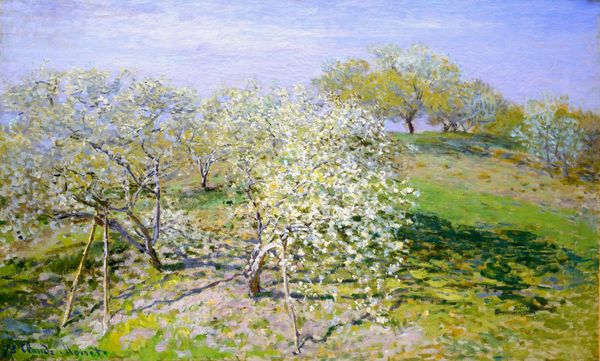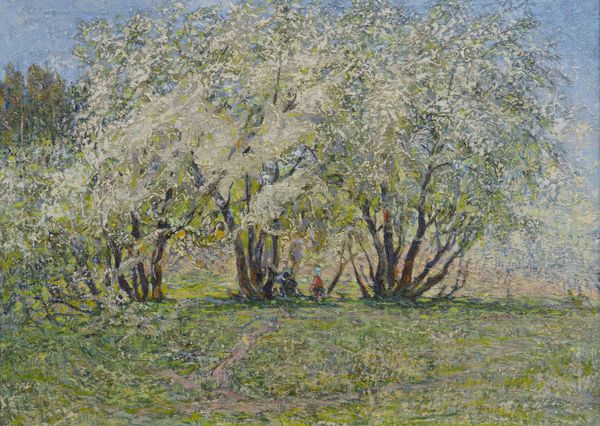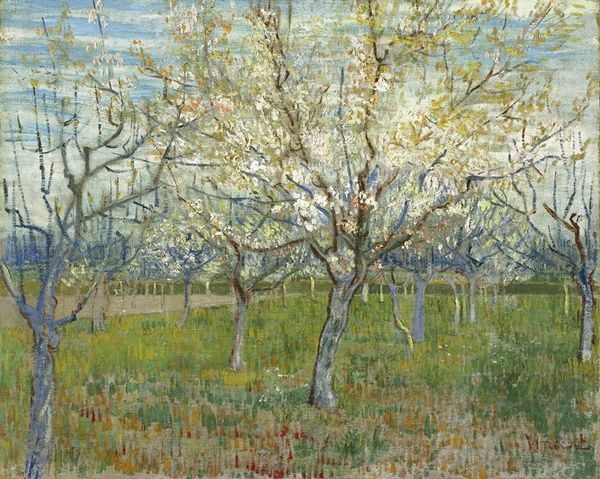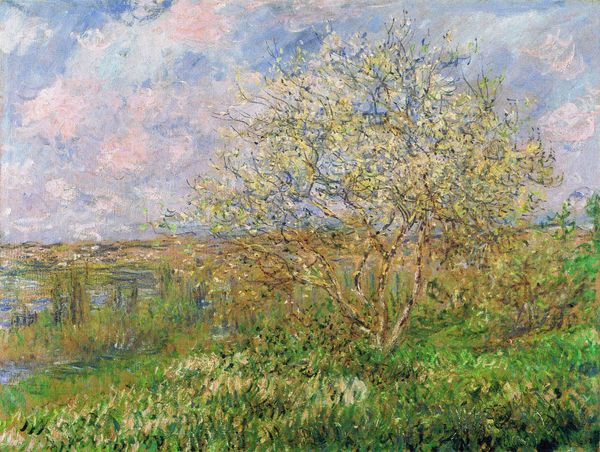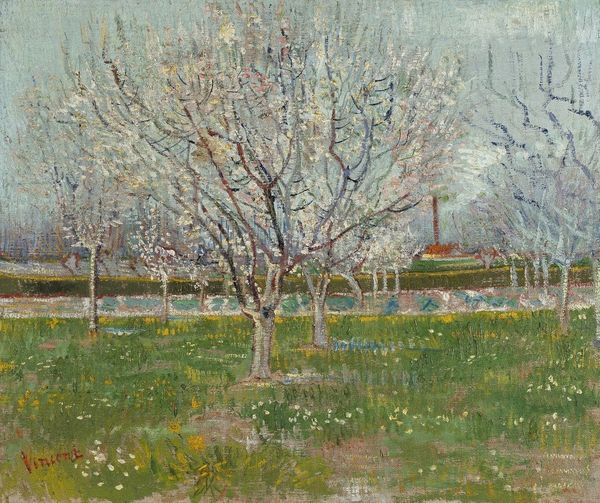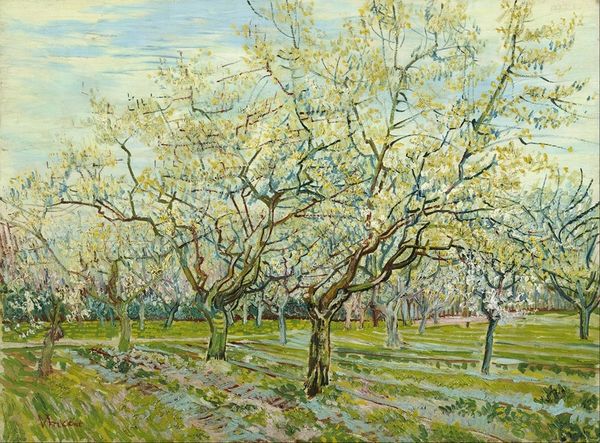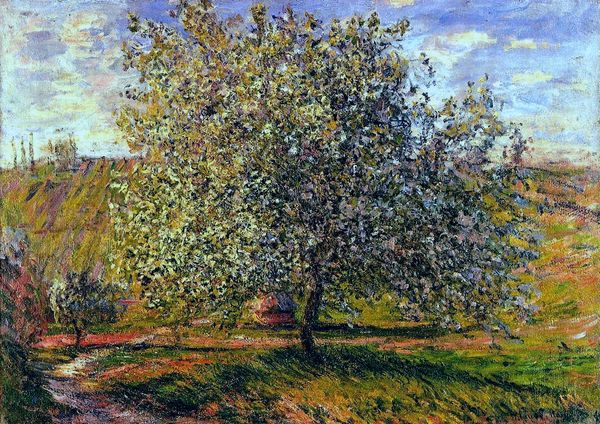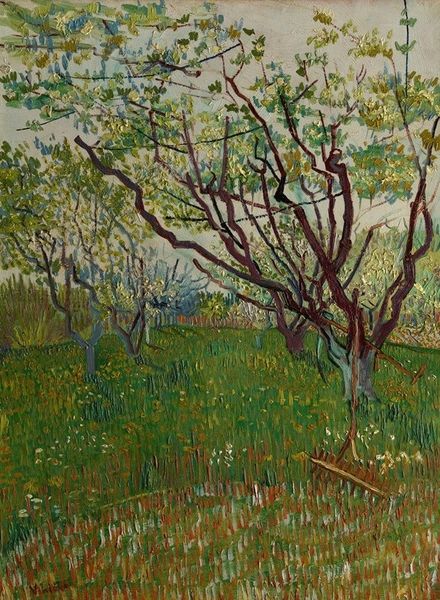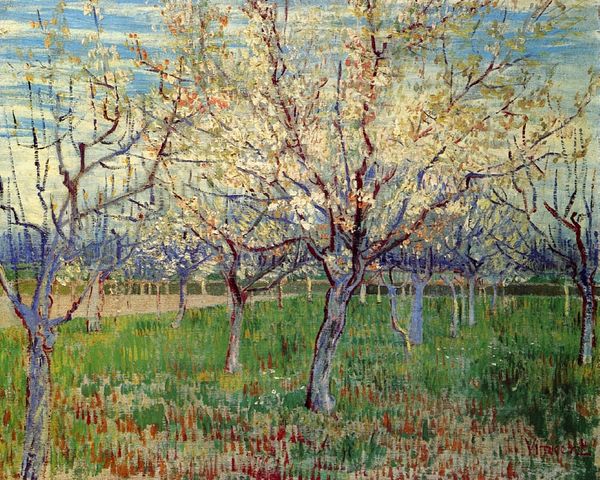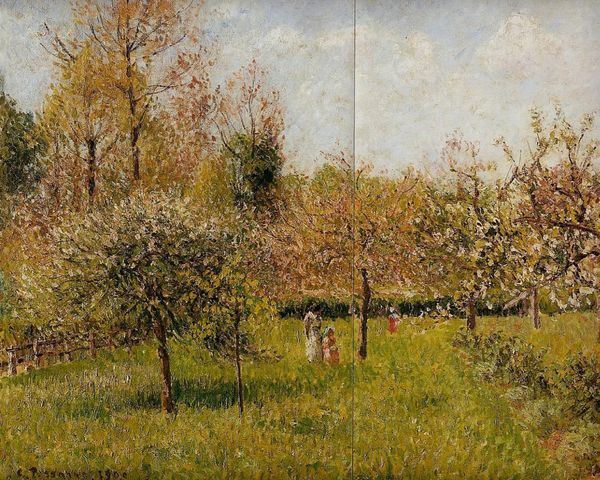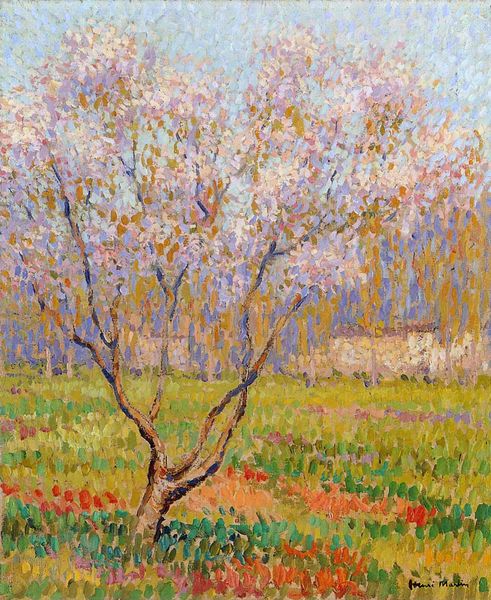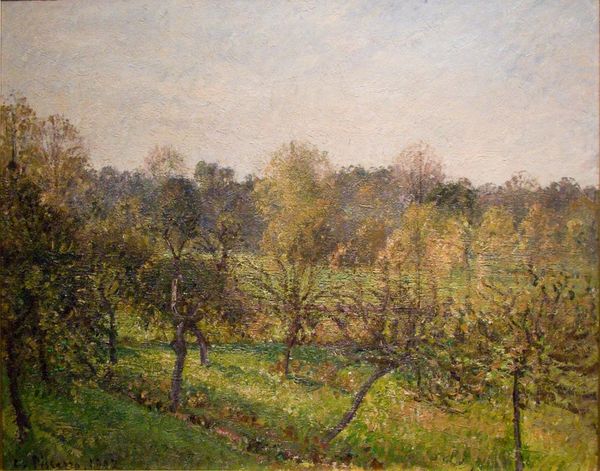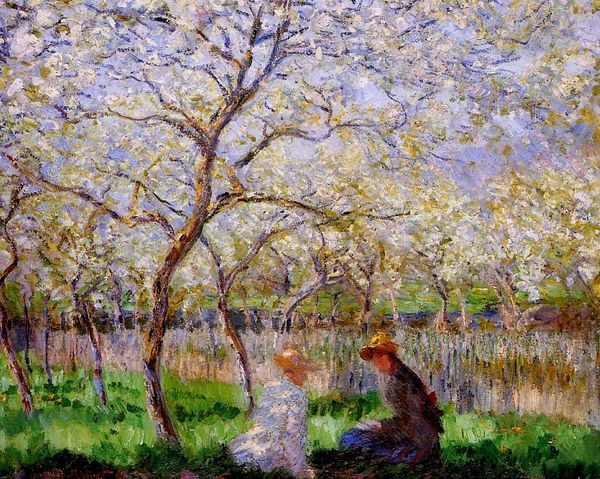
Copyright: Public domain
Curator: This is Claude Monet’s “Apple Trees in Bloom at Giverny,” painted in 1901. It’s an oil on canvas work typical of his exploration of light and color in his garden. Editor: Immediately, I'm struck by the effervescence. The overall tonality feels so bright and airy. The application of paint seems almost like a dance, particularly in the rendering of the blossoms. Curator: Indeed. Monet’s garden at Giverny became a powerful symbol of his artistic freedom. It was not just a private sanctuary but also a carefully designed public image that connected his art to ideas of nature and national identity. Editor: Absolutely, but the genius, in my view, lies in how he captures light's ephemeral qualities. The short, broken brushstrokes and the juxtapositions of blues and whites to construct the forms of the blossoms—it all works to give the impression of light filtering through the leaves. Note too how he almost dissolves the edges of forms. Curator: This dissolution, in the context of its time, signified a break from traditional academic art and realism, mirroring the changing societal values at the dawn of the 20th century, especially notions of freedom and individuality. Editor: Exactly. But it’s also about the purely visual experience. Observe the use of complementary colors – touches of violet and yellow – intensifying each other. See the almost arbitrary placement of paint dabs creating an optical vibrancy, challenging the viewer's perception. Curator: Considering his worsening eyesight, Monet's insistence on painting en plein air was a profound statement. It speaks to the social and personal struggle of continuing to create amidst physical adversity and evolving art markets, proving his dedication and reshaping ideas of artistic genius. Editor: Well said. The beauty emerges not just from subject, but from the dynamic interaction between artist, subject, and ultimately, the viewer’s perceptual engagement. It embodies pure seeing, a very modern pursuit. Curator: I agree. This piece offers layers of insight, reminding us of Monet's impact on art history and the power of cultivated artistic freedom. Editor: And for me, this exercise in pure seeing reveals itself a truly lasting meditation on beauty and the experience of perception itself.
Comments
No comments
Be the first to comment and join the conversation on the ultimate creative platform.
